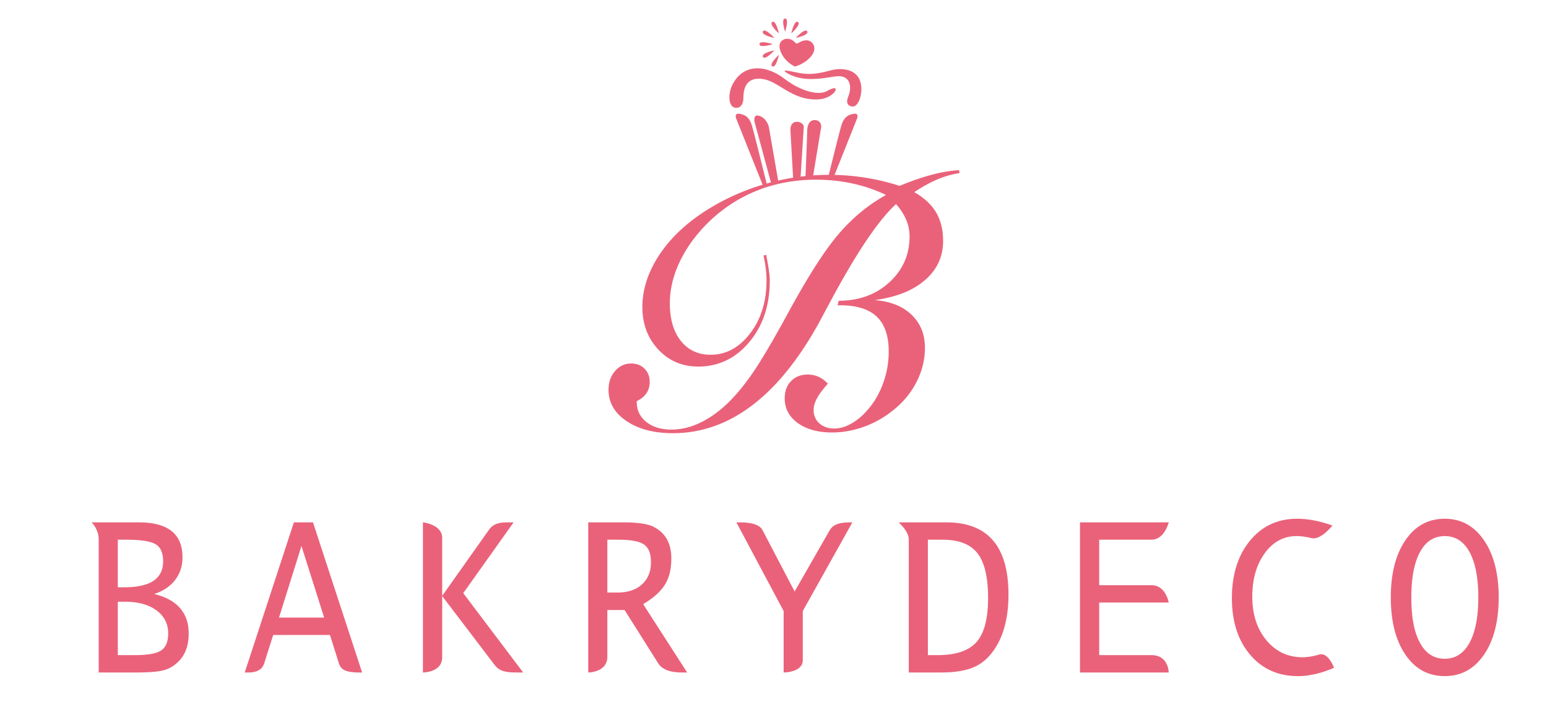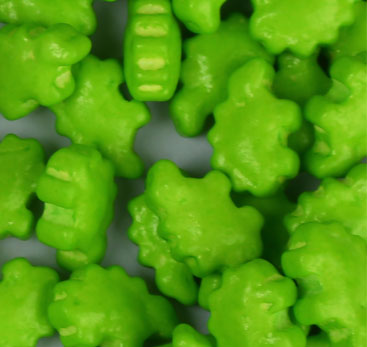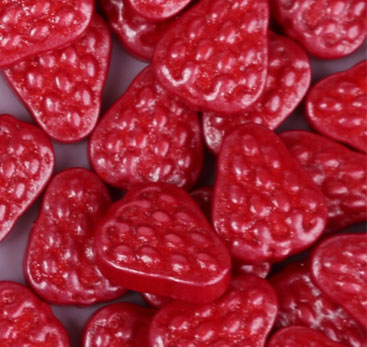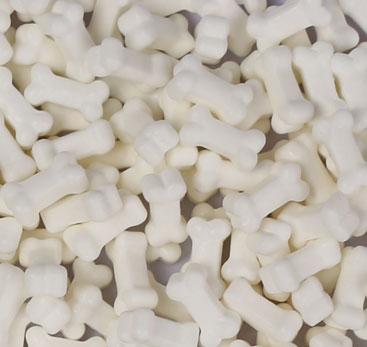A collection of "100% natural sprinkles" is made entirely from organic materials, devoid of artificial flavors, colors, or preservatives. Put these toppings on anything you bake. Natural sprinkles use plant-based colorants derived from fruits, vegetables, spices, and herbs as opposed to synthetic dyes and chemicals.
feature ingredients of Natural sprinkles.
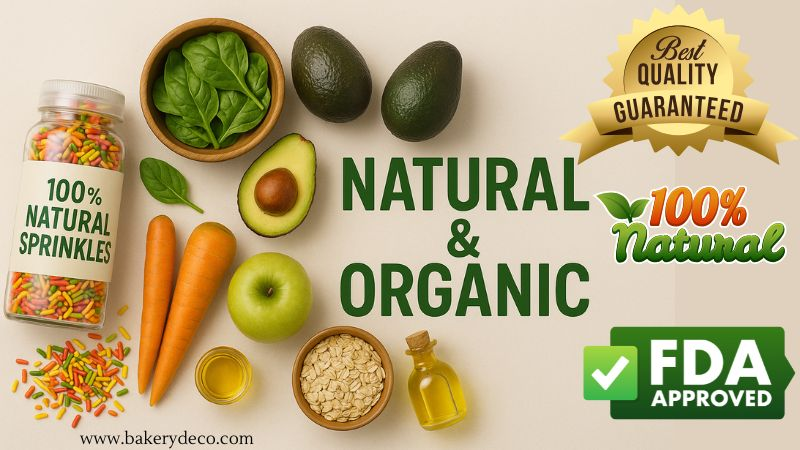
Natural sprinkles have vibrant pinks and reds derived from beet juice, which is a prevalent element in these condiments. You can get green from spirulina or spinach, yellow from turmeric or saffron, and blue from blue butterfly peas.
Why Choose 100% Natural Sprinkles?
Concerned about the possible negative impacts of synthetic chemicals on human health, an increasing number of consumers are seeking items with clear and comprehensive ingredient labels. Natural sprinkles, as a less allergenic option, keep up with the current trend for healthier eating and goods.
Latest U.S. Food Policy Regarding Sprinkles and Additives
The FDA changed its mind about food additives because of ongoing scientific discoveries. The revised rules, which will come into effect in 2024, will include strict limits on natural colorants and additives. Now, manufacturers have to clearly state on the label whether colourants are organic or synthetic.
All-natural sprinkles make it possible for everyone, from experienced chefs to home cooks, to meet their customers' needs and stay in line with the FDA's changing rules.
Experts say that the US sprinkles market will be worth $280 million by 2027, which means things will change soon. The FDA's "Clean Label Initiative" will make it illegal to use synthetic colors in baked goods starting in 2024. Commercial bakers, ice cream makers, and health-conscious customers lead this effort.
Important Changes for Food Businesses:
By June 20, 2024, all artificial colors in food must be replaced with organic colors that the FDA approves.
According to the new rules, any claim to be " human " must be backed up by $2,500 in proof from a third party. Changing laws say that natural sprinkles wrapped in coconut wax must have clear allergen warnings on them. Last quarter, a distributor in the Midwest lost $120,000 worth of returned goods because they didn't follow organic sprinkling rules.
How to Sell Natural Sprinkles for More Money
Use organic seasonings to make more money. Your "Clean Label Bakery Starter Pack" promotional materials could work. It has many different kinds of natural fondant. Make sure everyone knows about FDA rules. To do this, hold seminars for your bakery customers. It should be easy to see labels that say "Now Banned from Conventional Sprinkles."
As per the specification, the following elements must be present:
• Sucrose, preferably cane sugar, which is organic.
• Complex carbs are found in whole foods such as potatoes, rice, and tapioca.
• Flavors made with natural ingredients (such as vanilla or fruit extracts). A few examples of natural colorants are turmeric, beet juice, spirulina, carrot juice, and spinach extract.
• Wax and oils derived from fruits and vegetables, such as coconut oil and carnauba wax.
• In some instances, cornstarch or rice flour may serve as a binder or stabilizer.
The manufacturing process does not include artificial colors, flavors, or preservatives.
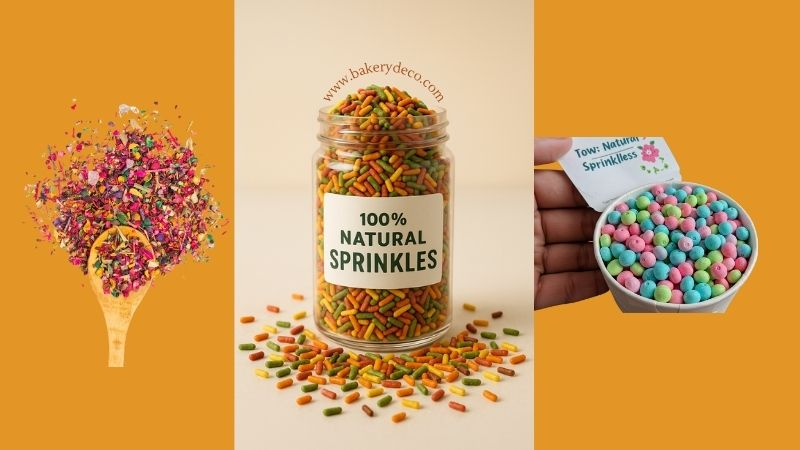
The Best Way to Make Money with Natural Sprinkles
§ B2B Plan: We have a "Clean Label Bakery Starter Pack" that comes with natural fondant, FDA-approved edible glitter, and a variety of sprinkles.
§ Go to FDA rules seminars to keep your clients up to date.
There are big warning signs that say "Now Banned in Conventional Sprinklers."
§ Prices vary from $12 per pound for standard kinds to $28 to $35 per pound for all-natural types. Some specialized bakeries even sell odd-colored kinds for $50 per pound.
Key Features of All-Natural Sprinkles:
ü "Dye-free" defines things that don't have any artificial dyes in them and instead utilize colors that come from plants. People with other food allergies may eat it without worry since it doesn't have gluten in it. It doesn't have any nuts in it; therefore, it's safe for those who are allergic to nuts.
ü Three businesses that are honest about the health advantages and ingredients of their products are Sweet Eva's Natural Sprinkles, Watkins Sprinkles, and Supernatural Sprinkles. "Are rainbow sprinkles gluten-free?" and "Are Betty Crocker sprinkles nut-free?" are two examples of questions that customers ask regarding well-known products. This is in line with the FDA's focus on safety and openness.
ü The FDA is making rules for "100% organic" products stricter in 2025. This includes natural sprinkles made only from organic ingredients and without artificial flavors, colors, or preservatives. These revised rules emphasize honesty, safety, and clarity in labelling.
These revised rules will apply to all natural sprinkle products made in the United States:
Stricter FDA Standards for Safety, Quality & Cybersecurity
Ø As part of enhanced post-market surveillance, manufacturers must gather consumer feedback and keep track of any negative events that happen with their products to show that they are safe.
Ø The FDA is updating the rules for manufacturing drugs and biologics to ensure they are always made to a high standard. This means using innovative manufacturing technologies and encouraging producers to be more open.
Ø People want better quality management systems that meet FDA standards and other international standards like ISO. These kinds of systems put a lot of emphasis on suppliers being reliable and lowering risks to stop contamination and product recalls.
Ø These rules are mostly for the pharmaceutical and medical fields. However, they also indirectly promote better cybersecurity for digital technology and medical device products by ensuring data is safe, clear, and easy to audit.
To follow these revised rules, businesses must:
o Lay down the evidence used to back up "natural" claims.
o Check the labels on products often to en certain they match what is inside.
o Set up strong processes that always make sure of the safety and quality of your products.
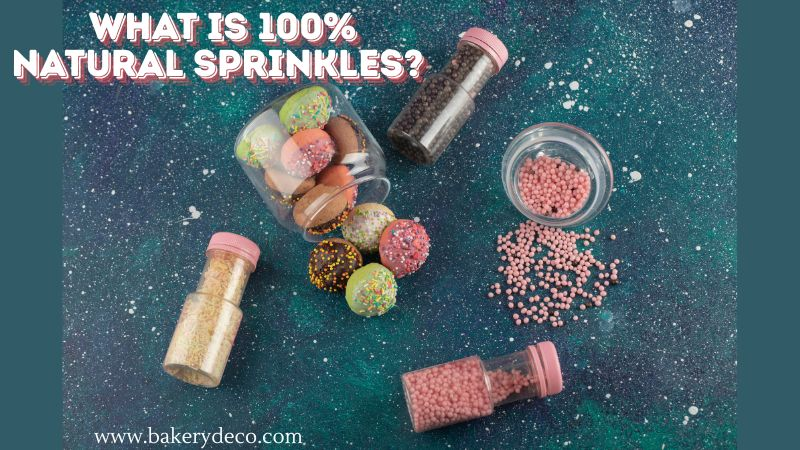
Organic & Natural Sprinkles
Sugar decorations that are 100% natural do not include artificial flavors, colors, or preservatives; instead, they are crafted from organic, organically occurring components. Instead of using corn syrup, processed sugars, artificial colors (such as Red 40 and Blue 1), or wax coatings, natural sprinkles get their color and flavor from plants. The key ingredients are organic cane sugar, organic flavorings, fruit and vegetable extracts (including turmeric, blue spirulina, and red beet juice), and water. To accommodate a wide range of dietary restrictions, these sprinkles are available in gluten-free, vegan, kosher, and genetically modified ingredient-free forms.
Using only clean materials and limiting processing is key to natural sprinkles. Paprika, annatto, or purple carrot extract are examples of organic dyes applied to tint the base, which is usually tapioca starch or shredded coconut. Instead of using synthetic stabilizers, manufacturers choose plant-based alternatives like acacia gum for textural purposes. Due to the extreme care taken to ensure purity at every stage of production, the final product meets all organic standards and clean-label trends.
FAQs:
Q: What ingredients are used to make organic sprinkles?
A: When making organic sprinkles, it is common to use plant-based ingredients and natural colours. Without artificial sweeteners or flavors, these sprinkles are crafted using only natural, natural materials.
· Their sugar is mostly organic.
· The RSPO seal of approval is included in this product since it uses natural palm kernels and oil.
· A thickening agent called maize starch is present in it.
· Naturally occurring pigments include paprika oleoresin, annatto, turmeric, spirulina, beetroot juice, vegetable juice, and beta-carotene.
· Organic sunflower lecithin, which acts as an emulsifier, carnauba wax, which acts as a coating agent, and cellulose gum, which serves as a texturizing and stabilizing agent, are among the additional components present.
· These components guarantee organic sprinkles by removing synthetic flavors, colors, and preservatives.
· The ingredients are minimal: shredded coconut, natural spices like turmeric, and juice from fruits or vegetables.
Q 2. What are sprinkles actually made of (traditional sprinkles)?
A: Many store-bought sprinkles use sugar, cornstarch, or another starch. Oils that repel water include palm kernel oil and soybean oil, among others. Red-40, Yellow5, Blue 1, and a plethora of additional artificial food colors are all part of this class. Human-created flavor enhancers.
Q 3. Do healthy sprinkles exist?
A: Some sprinkles benefit your health. Some typical ingredients are these:
• Natural sweeteners such as stevia, monk fruit, coconut sugar, and others are used instead of conventional sugar.
• Food-based natural dyes (from fruits, veggies, spices, and herbs).
• Alternatives that are allergen-friendly, vegan, and gluten-free
• Stay away from artificial flavours, colors, and preservatives.
You could also see the terms "natural," "clean label," "organic," and "plant-based" on product labels.
Q 4. What are fake sprinkles made of?
A: Common ingredients for artificial sprinkles are Polymer clay, resin, wax, or plastic. The only use they serve is as decorative items; they are not edible. In the context of baking, "fake" might also refer to inexpensive edible sprinkles mostly composed of synthetic chemicals, such as flavourings, colours, and fats.
Q 5. Can I call them "natural" if they contain stevia?
A: Ensuring that the proportion of formulation is 3% or lower is the sole method to meet the FDA's restrictions on sweeteners.
Q 6. Do natural sprinkles melt faster?
A: Yes, if heat stability is an issue, it's worth it to splurge for a coconut wax combination because it lasts 20% longer and is more expensive.
Q 7. What's the minimum order for private labelling?
For proprietary hues, most contract manufacturers will want a minimum of 2,000 pounds.
